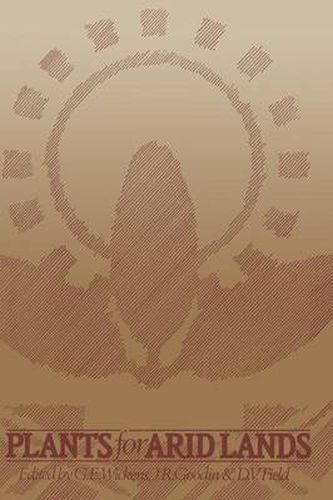Readings Newsletter
Become a Readings Member to make your shopping experience even easier.
Sign in or sign up for free!
You’re not far away from qualifying for FREE standard shipping within Australia
You’ve qualified for FREE standard shipping within Australia
The cart is loading…






This title is printed to order. This book may have been self-published. If so, we cannot guarantee the quality of the content. In the main most books will have gone through the editing process however some may not. We therefore suggest that you be aware of this before ordering this book. If in doubt check either the author or publisher’s details as we are unable to accept any returns unless they are faulty. Please contact us if you have any questions.
Economic plants have been defined by SEPASAT as those plants that are utilised either directly or indirectly for the benefit of Man. Indirect usage includes the needs of Man’s livestock and the maintenance of the environment; the benefits may be domestic, commercial or aesthetic. Economic plants constitute a large and so far uncalculated percentage of the quarter of a million higher plants in the World today. However, it has been calculated that 10% (25 000) of these species are now on the verge of extinction and extinction means that a genetic resource that could be of benefit to Man will be lost for ever. Furthermore, for every species lost an estimated 10-30 other dependent organisms are also doomed. Fewer than 1 per cent of the World’s plants have been sufficiently well studied for a true evaluation of the potential floral wealth awaiting discovery, not only in the rain forests, which man is now actively destroying at a rate of 20 ha a minute, but also in the very much neglected dry areas of the World.
$9.00 standard shipping within Australia
FREE standard shipping within Australia for orders over $100.00
Express & International shipping calculated at checkout
This title is printed to order. This book may have been self-published. If so, we cannot guarantee the quality of the content. In the main most books will have gone through the editing process however some may not. We therefore suggest that you be aware of this before ordering this book. If in doubt check either the author or publisher’s details as we are unable to accept any returns unless they are faulty. Please contact us if you have any questions.
Economic plants have been defined by SEPASAT as those plants that are utilised either directly or indirectly for the benefit of Man. Indirect usage includes the needs of Man’s livestock and the maintenance of the environment; the benefits may be domestic, commercial or aesthetic. Economic plants constitute a large and so far uncalculated percentage of the quarter of a million higher plants in the World today. However, it has been calculated that 10% (25 000) of these species are now on the verge of extinction and extinction means that a genetic resource that could be of benefit to Man will be lost for ever. Furthermore, for every species lost an estimated 10-30 other dependent organisms are also doomed. Fewer than 1 per cent of the World’s plants have been sufficiently well studied for a true evaluation of the potential floral wealth awaiting discovery, not only in the rain forests, which man is now actively destroying at a rate of 20 ha a minute, but also in the very much neglected dry areas of the World.